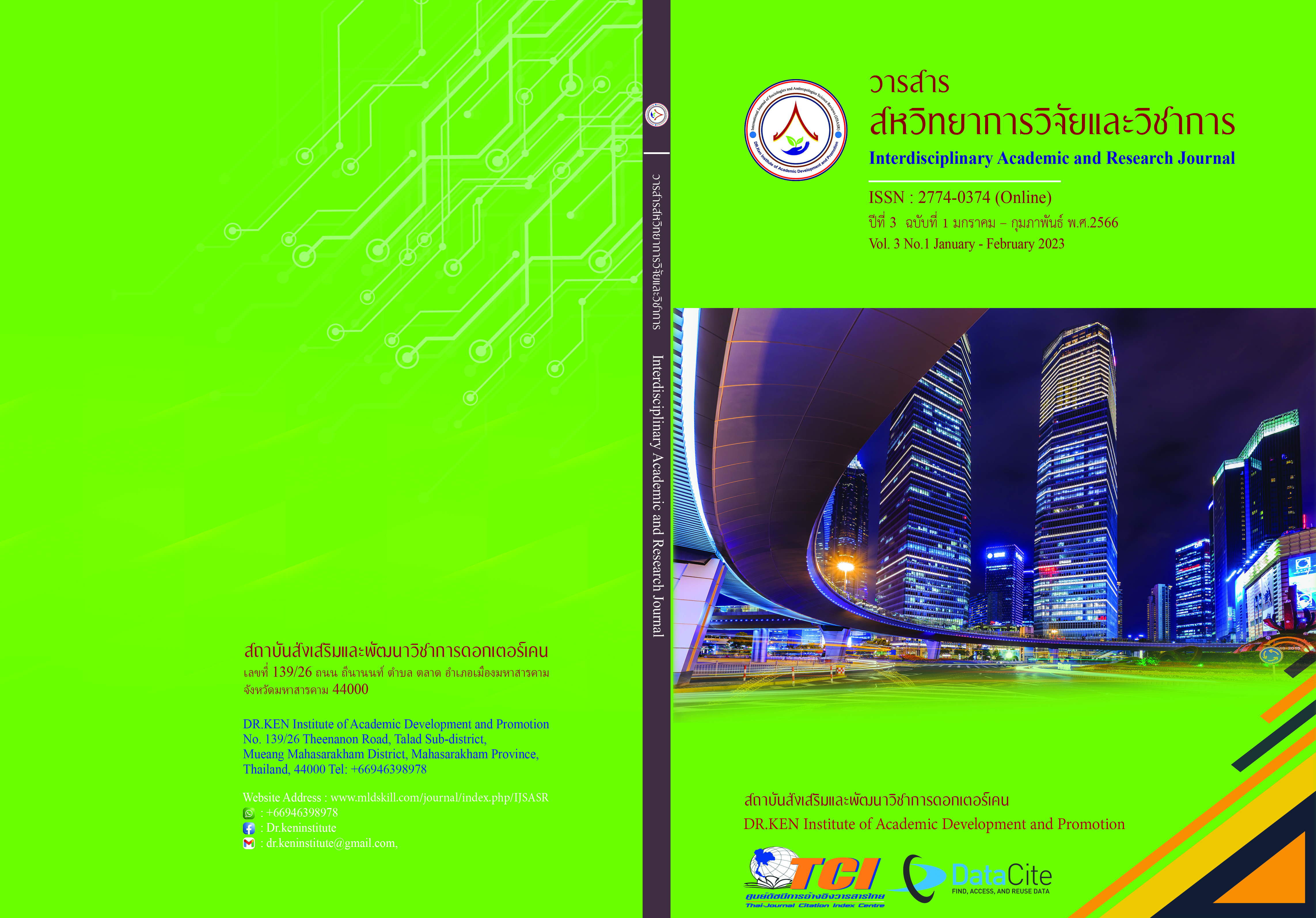Application of Local Wisdom of Durian Cultivation on Highland for Promoting the Community Economy in Chanthaburi Province
DOI:
https://doi.org/10.14456/iarj.2023.45Keywords:
Application; , Folk Wisdom; , Durian; , Community EconomyAbstract
Durian cultivation or durian production in Pong Nam Ron District is therefore more difficult than in normal plain areas. In addition to the aforementioned areas, many other factors affect such as production problems, ever-changing weather, natural disasters, and prolonged drought, which affects the quality. and low productivity, coupled with higher production costs. Therefore, this study has the objectives (1) to study local wisdom in planting durian on the highlands to drive the community economy in Chanthaburi Province. (2) To study the application of local wisdom in planting durian on the highlands to drive the community economy in Chanthaburi Province. And (3) to create a manual for transferring durian planting wisdom on the highlands to communities in Chanthaburi province. This research used culturally qualitative research methods, field observations, interviews, and focus group discussions. Analyze data in a descriptive analysis method. The results found that; (1) The context of the research area is hilly and undulating, between 252–353 m above sea level, originally fertile soil. The wisdom of planting and caring for durian has been passed down for a long time, from breed selection, planting methods, watering, fertilizing, prevention and elimination of various diseases, as well as taking care of the yield. Nowadays, farmers mainly grow Monthong durian because there is a market in China to support the production. (2) The application of folk wisdom in durian planting on the land consists of 8 things as follows; (a) adjusting the condition of the area to be convenient for management, (b) building a floating pool, (c) switching to electric motor pumps, (d) fertilizing through sprinklers to save time and labor, (e) technology to help pollinate durian flowers, (f) the use of colored fang ropes to tie the branches to the durian to help memory, (g) innovation of double durian planting, and (h) using bamboo to support branches and durian trees to prevent them from being broken by storms. And (3) the results of the operation have prepared a manual for durian production in the highlands by applying local wisdom in durian cultivation in the highlands to drive the community economy in Chanthaburi Province.
References
ทรงคุณ จันทจร. (2563). การวิจัยเชิงคุณภาพทางวัฒนธรรม . คณะมนุษยศาสตร์และ สังคมศาสตร์ มหาวิทยาลัยราชภัฏมหาสารคาม.
ประเสริฐ บัวทอง. (2560). ปัจจัยที่มีผลต่อการตัดสินใจปลูกทุเรียนของเกษตรกร ในตำบลอ่างคีรี อำเภอมะขาม จังหวัดจันทบุรี. หลักสูตรบริหารธุรกิจมหาบัณฑิต มหาวิทยาลัยบูรพา.
ปราโมทย์ ร่วมสุข และคณะ. (2562). “การสร้างสวนทุเรียนมือใหม่สู่มืออาชีพ” พิมพ์ครั้งที่ 2. กรุงเทพฯ. ห้างหุ้นส่วนจำกัดเฟรม-อัพ ดีไซน์.
วนิดา เหรียญทอง. (2560). แนวทางการส่งเสริมการผลิตทุเรียนของเกษตรกรในอำเภอท่าแซะ จังหวัดชุมพร. การประชุมเสนอผลงานวิจัยระดับชาติ มหาวิทยาลัยสุโขทัยธรรมาธิราช ครั้งที่ 8 The 8th STOU National Research Conference
สำนักงานเศรษฐกิจการเกษตร. (2563). สถิติการเกษตรของประเทศไทย. ใน สถิติการเกษตรของ ประเทศไทย ปี 2563. กรุงเทพฯ.
สำนักงานจังหวัดจันทบุรี. (2563). “แผนพัฒนาจังหวัดจันทบุรี พ.ศ. 2561 – 2565” กลุ่มงาน ยุทธศาสตร์และข้อมูลเพื่อการพัฒนาจังหวัด จังหวัดจันทบุรี สำนักงานปลัดกระทรวง มหาดไทย.
สำนักงานพานิชย์จังหวัดจันทบุรี. (2562). สถานการณ์การผลิตและการตลาดทุเรียนจังหวัดจันทบุรี เดือนพฤษภาคม 2562. กลุ่มยุทธศาสตร์และแผนงาน สำนักงานพาณิชย์จังหวัด จันทบุรี กระทรวงพานิชย์.
สำนักงานอำเภอโป่งน้ำร้อน. (2562). ข้อมูลทั่วไปอำเภอโป่งน้ำร้อน จังหวัดจันทบุรี. จันทบุรี :สำนักงานอำเภอโป่งน้ำร้อน.
Brown, M. J. Durio. (1997). A Bibliographic Review (R.K. Arora, V. Ramanatha Rao, and A.N. Rao, Editors). IPGRI office for South Asia, New Delhi.
Downloads
Published
How to Cite
Issue
Section
License
Copyright (c) 2023 สุพัฒน์ สุระดนัย, ทรงคุณ จันทจร, ระพีพันธ์ ศิริสัมพันธ์

This work is licensed under a Creative Commons Attribution-NonCommercial-NoDerivatives 4.0 International License.
Copyright on any article in the Interdisciplinary Academic and Research Journal is retained by the author(s) under the under the Creative Commons Attribution-NonCommercial-NoDerivatives 4.0 International License. Permission to use text, content, images, etc. of publication. Any user to read, download, copy, distribute, print, search, or link to the full texts of articles, crawl them for indexing, pass them as data to software, or use them for any other lawful purpose. But do not use it for commercial use or with the intent to benefit any business.
















.png)


